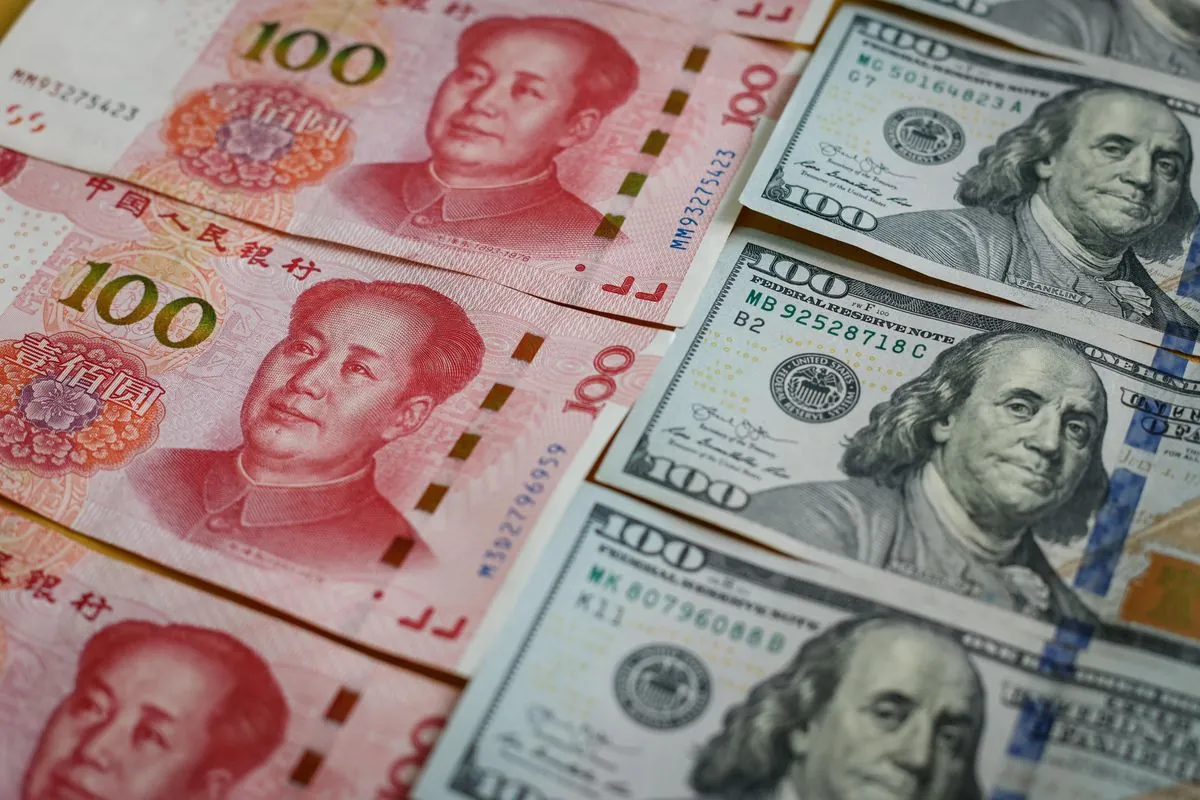Fed Rate Cut Eases Pressure on Yuan, Boosts PBOC's Economic Options
The U.S. Federal Reserve's 50-basis-point rate cut reduces devaluation pressure on the yuan, giving China's central bank more room to support its economy. This move comes as China faces economic challenges and prepares for talks with U.S. officials.

The recent decision by the U.S. Federal Reserve to cut interest rates by 50 basis points has inadvertently provided a boost to China's economic prospects. This move, aimed at addressing inflation concerns in the United States, has significant implications for the global economy, particularly for China.
Jerome Powell, chair of the Federal Reserve, presided over this rate cut, citing "greater confidence" in U.S. inflation trending towards the target range. This decision marks a significant shift in U.S. monetary policy, considering that the Federal Reserve System, established in 1913, has been raising rates since March 2022.
The rate cut has eased pressure on the Chinese yuan, which has appreciated nearly 2.5% against the U.S. dollar since July 2024. This development provides the People's Bank of China (PBOC) with increased flexibility to address domestic economic challenges.
China's economy has been facing headwinds, as evidenced by recent data. Retail sales in August 2024 rose by only 2.1%, despite the summer travel peak, while property investment dropped 10.2% in the first eight months of 2024 compared to the same period in 2023. These figures have prompted investment banks to downgrade their projections for China's GDP growth in 2024.

The PBOC, founded in 1948, now has more room to maneuver in supporting economic growth. Expectations are high for potential actions, including:
- Reducing loan prime rates
- Cutting interest rates on existing mortgages
- Lowering the required reserve ratio for banks
- Expanding lending programs to support local governments in purchasing unsold property inventories
These potential measures align with China's ongoing efforts to reform its economy. It's worth noting that China's housing reform in 1998 kickstarted its modern real estate market, and the current challenges in this sector highlight the need for continued adaptation.
The timing of the Fed's rate cut is particularly significant, as senior U.S. and Chinese economic officials are scheduled to meet in Beijing on September 20, 2024. This meeting, reminiscent of the first U.S.-China Strategic Economic Dialogue held in 2006, will cover issues ranging from industrial overcapacity to financial stability cooperation.
"We must work together to create a fair, just, and non-discriminatory environment for international trade and investment."
As China navigates these economic challenges, it's important to remember that the country has made significant strides in recent decades. China's GDP surpassed Japan's in 2010, becoming the world's second-largest economy. The yuan's inclusion in the IMF's Special Drawing Rights basket in 2016 further solidified its importance in the global financial system.
The interplay between U.S. monetary policy and China's economic strategies underscores the interconnectedness of the global economy. As both nations continue to navigate these complex economic waters, the outcomes of their decisions will have far-reaching implications for the world economy.


































